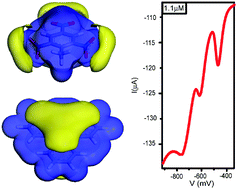Functionalized carbon nanotubes as sensitive materials for electrochemical detection of ultra-trace 2,4,6-trinitrotoluene†
Abstract
This report demonstrates a novel electrochemical method for fast and sensitive detection of ultra-trace

a
Beijing National Laboratory for Molecular Science, Institute of Chemistry, Chinese Academy of Sciences (CAS), Beijing, China
E-mail:
wanlijun@iccas.ac.cn
b Schlumberger-Doll Research, , Ridgefield, Connecticut 0687, USA
This report demonstrates a novel electrochemical method for fast and sensitive detection of ultra-trace

 Please wait while we load your content...
Something went wrong. Try again?
Please wait while we load your content...
Something went wrong. Try again?
H. Zhang, J. Hu, C. Yan, L. Jiang and L. Wan, Phys. Chem. Chem. Phys., 2006, 8, 3567 DOI: 10.1039/B604587C
To request permission to reproduce material from this article, please go to the Copyright Clearance Center request page.
If you are an author contributing to an RSC publication, you do not need to request permission provided correct acknowledgement is given.
If you are the author of this article, you do not need to request permission to reproduce figures and diagrams provided correct acknowledgement is given. If you want to reproduce the whole article in a third-party publication (excluding your thesis/dissertation for which permission is not required) please go to the Copyright Clearance Center request page.
Read more about how to correctly acknowledge RSC content.
 Fetching data from CrossRef.
Fetching data from CrossRef.
This may take some time to load.
Loading related content
